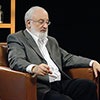 The spiritual world is a world of forces that act according to laws that we partially understand, while some aspects remain unknown – just like mainstream sciences that explore the nature of this world. We understand parts of the spiritual world, while other parts remain hidden.
The spiritual world is a world of forces that act according to laws that we partially understand, while some aspects remain unknown – just like mainstream sciences that explore the nature of this world. We understand parts of the spiritual world, while other parts remain hidden.
We have to exercise a strictly scientific and sober approach to spiritual research, just like we do when studying physical nature. What’s concealed today will reveal itself tomorrow. The science of Kabbalah provides us with research tools (Kelim), which can be likened to a microscope within us that we can use to see spiritual forces, the forces of bestowal.
However, we have to possess the power of bestowal in order to measure these forces, to see and discern them. A human being interprets all the knowledge and experiences he receives through himself.
After we develop our powers of bestowal, we tune them just like we would tune a sensitive microscope and use it to penetrate into the depth of matter (desire) where we observe various phenomena (giving and receiving) in accordance with the sensitivity of each of our vessels of perception (Kli)
In any science we always serve as an instrument since we are the ones who ultimately receive knowledge, and to a certain extent we do so subjectively. When we study the science of Kabbalah, we do so consciously and we ourselves become an instrument of research. However, the research itself must be purely scientific. Our research becomes objective because it is in our nature to strive towards objectivity.
On many occasions, Kabbalists said: “I will know You from Your actions,” “Know your Creator and serve Him,” “For everyone, from the least to the greatest, will know Me.”
There are only two forces (properties) in the whole universe: the Light (property of bestowal) and the desire to be pleased (property of receiving) that it created. Everything else follows from these properties.
The same applies in mathematics: we have a zero, and a value other than zero. Everything else follows from those values and is simply a matter of calculation. Physics is also the same: there are two forces which are different from one another.
This applies to the Upper Light as well. The moment a point that is a little darker than the Light appears, we have two different properties. That is when progress begins and the science of Kabbalah emerges.
As with any other science, Kabbalah studies discrepancies between two forces (phenomena). This becomes possible by enhancing the differences between them with the help of a microscope (analysis), or by finding points of connection (synthesis).
Science is based on finding the interactions between two forces – the Creator (bestowal) and the creation (receiving) on all levels of their manifestation within desire (matter). It’s impossible to identify and study one force without the other. With the help of analysis and synthesis, we study their interaction and then arrive at certain conclusions. “There is no Creator without the creation and there is no creation without the Creator.”
Contemplating only one force is wrong and won’t lead to scientific conclusions, but rather brings up deliberations about an abstract form. When I say, “The property of bestowal,” what do I mean? What is it? Who does it give to? Who does it influence? Where do signs of it show up? How do I know that it is bestowal? The answers is: by understanding the opposite.
You can tell the difference only by comparing opposites – by studying someone who is receiving. We cannot simply say that something is positive, because in relation to what is it positive? Where is the negative?
In other words, you cannot discern something on its own – you can do so only in relation to something else. The foundation of any science lies in comparisons. There is nothing in the universe except two forces.
This approach is strictly observed in the science of Kabbalah. If you distance yourself from matter and the form that defines matter, it becomes mysticism.
Filed under: Daily Kabbalah Lesson - No Comments →
 A question I received: Kabbalah says that people should not practice mysticism, but should treat everything taking place from a realistic standpoint. On the other hand, the method of Kabbalah is based on “miracles” from Above – things that are incomprehensible and irrational, as you have explained. How do these two things mesh together?
A question I received: Kabbalah says that people should not practice mysticism, but should treat everything taking place from a realistic standpoint. On the other hand, the method of Kabbalah is based on “miracles” from Above – things that are incomprehensible and irrational, as you have explained. How do these two things mesh together?

 A question I received:
A question I received: 

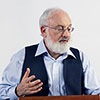
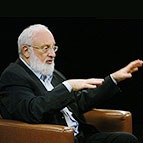
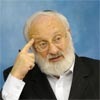

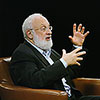 A question I received:
A question I received:




